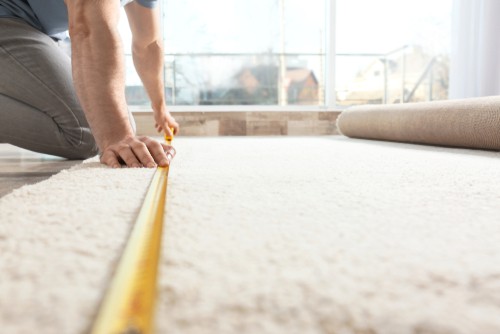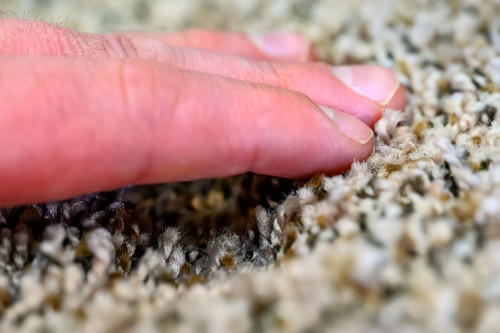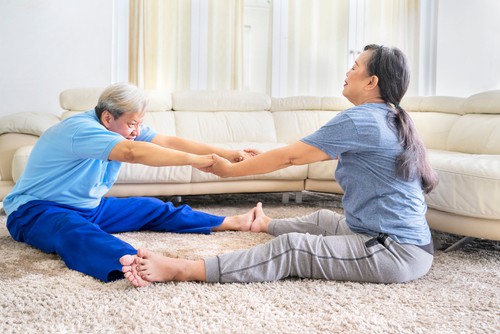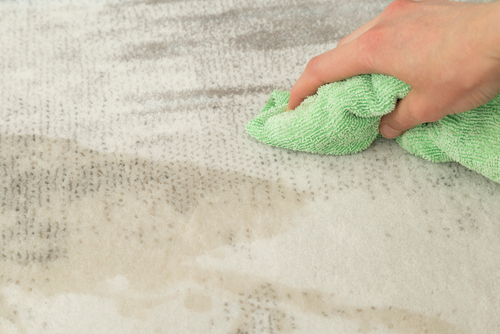
Different Types of Carpets and Their Cleaning Needs
October 2, 2023
Integrating Carpets into Minimalist Interior Designs
December 1, 2023Carpet Flooring for Senior Living: Comfort and Safety

Carpet Flooring for Senior Living Comfort and Safety
Carpet Flooring for Senior Living: Comfort and Safety. Flooring is crucial in senior living environments, impacting comfort, mobility, and safety.
It’s a fundamental aspect of creating spaces that promote well-being for older individuals. Carpet flooring is particularly significant for seniors due to its softness, slip resistance, and noise reduction properties.
These attributes make it an ideal choice for senior living spaces, where comfort and safety are paramount.
This article delves into the world of carpet flooring in senior living environments, exploring the benefits, types, and factors to consider when choosing the right carpet, installation guidelines, and essential safety measures.
Why Carpet Flooring Is Ideal for Senior Living
Softness and Comfort for Aging Joints
One of the primary advantages of carpet flooring in senior living spaces is its ability to provide a soft and cushioned surface that’s gentle on aging joints. It minimizes the impact of walking and provides comfort for seniors.
Slip Resistance and Fall Prevention
The carpet’s texture and grip make it an excellent choice for fall prevention. It offers a stable walking surface and reduces the risk of slips and falls, which is critical for senior safety.
Noise Reduction and Acoustic Comfort
The carpet’s ability to absorb sound and reduce noise is beneficial in senior living environments. It creates a quieter, more comfortable atmosphere, contributing to a better quality of life for residents.
Types of Carpet Flooring Suited for Senior Living

Low-Pile Carpets
Benefits of Low-Pile Carpets
Low-pile carpets are easy to traverse, making them ideal for seniors with mobility challenges. They also offer durability and ease of mobility for walkers and wheelchairs.
Durability and Ease of Mobility
These carpets are built to withstand heavy use and are easy to navigate, providing a comfortable and functional surface for seniors.
Textured Carpets
Added Traction and Slip Resistance
Textured carpets provide additional traction, reducing the risk of slips and falls. Their surface offers a firm grip, ensuring stability for seniors.
Concealing Dirt and Stains
The textured patterns on these carpets help hide dirt and stains, maintaining the carpet’s appearance and reducing the need for frequent cleaning.
Carpet Tiles
Easy Replacement and Maintenance
Carpet tiles are a practical choice for senior living facilities. They can be replaced individually if damaged, reducing maintenance costs.
Customization for Safety
Carpet tiles allow for customized patterns and colors, which can be used to create visual cues for seniors, aiding them in navigation and wayfinding.
Choosing the Right Carpet for Senior Living
Factors Influencing Choice
Mobility and Assistance Devices
Consider the mobility needs of residents, such as walkers or wheelchairs. Low-pile or textured carpets are suitable for ease of movement.
Allergen Considerations
For seniors with allergies, opt for allergen-resistant carpet options, and ensure that regular cleaning and vacuuming are part of the maintenance routine.
Color and Design Selection
Creating an Inviting and Safe Environment
Choose colors and patterns that create a welcoming and safe environment. Consider using contrasting colors to define pathways and boundaries.
Maintaining a Pleasant Aesthetic
Balance safety with aesthetics by selecting carpets that match the decor of the senior living facility, creating a visually appealing and functional space.
Carpet Flooring Installation for Seniors

Professional Installation Benefits
Professional installation ensures the carpet is fitted correctly, minimizing potential hazards and ensuring longevity.
Pre-Installation Considerations
Subfloor Preparation
Ensure the subfloor is clean and smooth, with no uneven surfaces that could impede mobility aids.
Transition to Other Flooring Types
Plan for smooth transitions between carpeted areas and other types of flooring to avoid trip hazards.
Post-Installation Care and Maintenance Tips
Regular carpet cleaning and maintenance are essential for extending the carpet’s lifespan and ensuring a safe and comfortable living environment for seniors.
Ensuring Senior Safety with Carpet Flooring
Fall Prevention Measures
- Use non-slip underlayments and grippers to keep the carpet in place, reducing the risk of accidents.
- Well-lit areas and clear pathways enhance safety. Ensure adequate lighting in hallways and common areas.
Addressing Allergen Concerns
- Regular cleaning, including vacuuming, is crucial to minimize allergens and maintain a healthy indoor environment.
- Consider allergen-resistant carpet materials that are designed to minimize the buildup of dust and allergens.
Potential Drawbacks and Considerations

Moisture and Mildew Risks
Address moisture concerns promptly to prevent mildew and maintain a healthy indoor environment.
Balancing Comfort with Mobility
While comfort is essential, striking a balance between comfort and mobility is crucial for the safety and well-being of seniors.
Regular Maintenance for Longevity
Consistent maintenance, including regular cleaning and inspections, is necessary to ensure the carpet’s longevity and safety.
Frequently Asked Questions
What is the best type of carpet for seniors with mobility issues?
Low-pile carpets offer ease of mobility and are ideal for seniors with mobility challenges.
Can I install carpet flooring over hard flooring in a senior’s home?
Yes, carpet can be installed over existing hard flooring with proper preparation.
Are there specific colors or patterns that are safer for senior living?
Colors that create visual contrast and patterns that define pathways are safer for senior living spaces.
How can I ensure the carpet is easy to clean for seniors with allergies?
Opt for allergen-resistant carpet options and implement a regular cleaning and vacuuming routine.
Are there any alternatives to traditional carpets for senior living?
Vinyl and laminate flooring are alternatives that offer ease of maintenance and safety.
What should I do if the carpet gets wet or flooded in a senior’s home?
Address wet carpets promptly to prevent moisture-related issues, and consider water-resistant materials.
How often should I replace carpets in senior living facilities?
The frequency of carpet replacement depends on factors such as the type of carpet and the level of use. On average, it may be replaced every 5 to 15 years.
Can seniors use area rugs in addition to carpets for added comfort?
Area rugs can be used to enhance comfort and aesthetics in senior living spaces. Ensure they are secured to prevent tripping hazards.
Carpet Flooring for Senior Living: Comfort and Safety – Conclusion

Carpet flooring in senior living environments offers comfort, safety, and noise reduction. Choosing the right carpet and implementing safety measures ensures an ideal living space for seniors.
Create living spaces that prioritize the well-being and safety of seniors, enhancing their quality of life.
Carpet flooring is an invaluable asset in senior living environments, providing a comfortable, safe, and aesthetically pleasing flooring option that enhances the lives of older individuals.
Are you seeking professional and reliable carpet installation or carpet supplier in Singapore? Contact us today!



